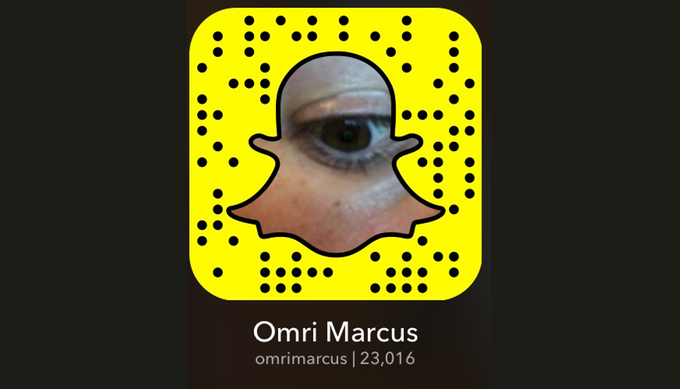
*and if you got the reference you are probably Generation X.
History is just not what it used to be. Processes that took decades to bear fruit in the pre-social media age now, thanks to Facebook, draw to a cluttering, high-strung close within a few years.
Millennials, those who were born in the late 1980s, have been the chief promoters of this new method of communication. Each of their achievements, meals and thoughts is made public and, hopefully, viral to boot; and it wasn’t long before every company, brand and commercial endeavor jumped on the bandwagon. But Facebook stopped being subversive and cool the moment your granny “liked” a photo of you in India holding a joint.
Very soon, getting hundreds of birthday wishes from anonymous people, pokes and other inconsequential gestures lost their charm. Plus, millennials aren’t as young and gullible anymore either. And unlike them, the new generation of social media users doesn’t see Facebook as a novelty – but as just another tool, with quite a few flaws.
To them, Snapchat is what Facebook was to millennials. It’s still the third-most popular social network, but the ratings are uncanny. No less than 100,000,000 users aged under 25 on average spend at least 30 minutes a day on Snapchat – and the fact that it requires the user’s undivided attention makes that number no less than extraordinary.
Why bother with picture-perfect moments if it’s all going to be gone within 24 hours anyway?
It’s already overtaken Facebook in the degree of exposure to video clips – 8.1 billion as opposed to a mere 8 billion per day. In real terms, provided that Facebook plays videos automatically, whereas this function doesn’t even exist on Snapchat, the gap is simply jaw-dropping.
Snapchat signifies a generational change as big as the one Facebook ushered a mere few years ago. Lumping them together, as part of the same revolution, would be horribly misguided.
The Snapchat generation looks at the millennials the same way the latter looked at Generation X – with a mixture of puzzlement and contempt. They are simply unable to understand their older peers’ narcissistic obsession with documenting themselves and whatever they do.
Whereas millennials groom their Facebook and Instagram accounts for posterity, the Snapchat generation fell back in love with expiry dates. Why bother with picture-perfect moments if it’s all going to be gone within 24 hours anyway?
The Snapchat generation has little patience for millennials’ penchant for nostalgia. They frown upon their tendency to look back on memories from as early as five minutes or a day ago. Worse still, millennials’ love for black-and-white or 80s-style grainy camera filters is seen as outlandish, at best. For the Snapchat generation, now is where it’s all happening. Historical sense, for them, is history.
The generational differences are astonishing. While millennials divide their attention between 2-3 screens and reality (often, but not always), the Snapchat generation has been disciplined by the app’s requirement for undivided attention. Equally, Snapchat is a lot more egalitarian: Users’ perspectives are pooled into a multi-layered storyline, leaving very little space for the millennial to take the obligatory selfie at the center of wherever he or she is.
We are about to see a surge in vertical content speaking Snapchat-ese
But that’s not all. Millennials are the last remaining survivors of the desktop computer and TV set era. For them, screens are horizontal. Having no recollection of screens as the centerpieces at home, the Snapchat generation consumes their content vertically – in the way they hold up their smartphone or tablet.
Snapchat is the poster boy of the “post-Buzzfeed” era. Its users just don’t fall for click baits. Forget about “This old man swallowed an ecstasy tablet and you won’t believe what happened next.” It just won’t work. Because their attention is undivided, they demand that their time be respected. Even for under 25-year-olds, life is too short.
Burberry, for example, shunned the traditional print catalogue and launched their new advertising campaign on Snapchat. Because it disappeared into thin air soon thereafter, leaving no trace, users felt compelled to watch it while it’s live. It’s the same kind of excitement we dinosaurs used to feel in the pre-VCR era, when our favourite show was on TV.
Domino’s Pizza launched a Snapchat campaign that included a puzzle – offering free pizzas to those who solved it. Details and hints were released over 24 hours, as if it were a rolling news story. That kept excitement and interest sky-high.
We are about to see a surge in vertical content speaking Snapchat-ese. As always, the first attempts would include superimposing content from other social media, but after a process of trial and error, we’ll see a well-honed language that’s tailor-made for this specific platform.
At any given moment, a TV viewer goes to meet his maker and a teenager downloads Snapchat. It will become his main content provider – whether for social networking, news, entertainment and information. Advertisers and publicists who fail to come to terms with this major turn imminently can already write off an audience composed entirely of 25-year-olds and under.
Omri Marcus is the CEO of The Comic Genome Project LLC. This article also appeared on the Huffington Post.
